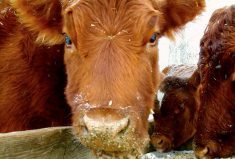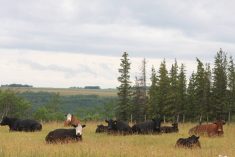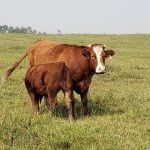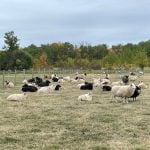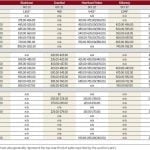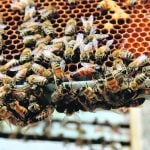Western Canadian feeder cattle prices were once again unchanged from week-ago levels. After the major rally in late April and May, the market has basically traded in a sideways range and is looking for direction.
Feedlot operators have experienced healthy margins during the first half of 2017 and this will likely continue until September. They have a lot of buying power but appear hesitant to step forward too aggressively. The deferred live cattle futures continue to trade at a sharp discount to the cash market, resulting in a cautious tone. Buyers border on impertinence when they do pay up, but buyer’s remorse only comes five months later after selling the finished animal. In central Alberta, red white-face steers with medium flesh averaging around 825 lbs. sold for $208; Simmental-cross mixed steers averaging 925 lbs. were quoted at $196 landed in southern Alberta. If buyers want quality groups, they have to pay up because next month there will be limited cattle on offer. That’s the real and first concern; margins are a distant second.
Read Also

U.S. grains: Soy futures set 15-month high after China agrees to purchases
U.S. soybean futures reached a 15-month high on Thursday after President Donald Trump’s administration said top-importer China agreed to buy tens of millions of tons of American crops in the next few years as part of a trade truce.
For grassers, is the drought on or off? When 525-lb. medium-frame mixed steer calves with no special feature trade up to $265 in central Saskatchewan, one wonders how grass can increase the overall value. Similarly, a small group of mixed heifers averaging 630 lbs. were quoted at $226 in central Alberta. If these cattle go direct into the feedlot, they will only come on the market next March and the longer time factor suggests the risk is favourable. These feed grain prices could become hot, which would add another $40-$50 of input costs next fall. The drought is off for cattle but on for grains.
Younger cow-calf pairs are readily selling in the range of $3,300-$3,500, which suggests there is a fair amount of optimism in the trade. The cattle market in general is encouraging expansion. Canadian inventory are marginally higher but a sharp year-over-year increase in calf numbers is expected this fall in the U.S.
— Jerry Klassen manages the Canadian office of Swiss-based grain trader GAP SA Grains and Produits Ltd. and is president and founder of Resilient Capital, specializing in proprietary commodity futures trading and market analysis. Jerry consults with feedlots on risk management and writes a weekly cattle market commentary. He can be reached at 204-504-8339.






